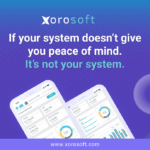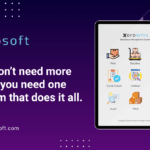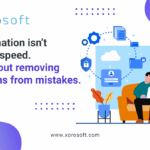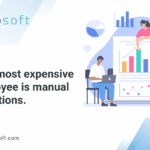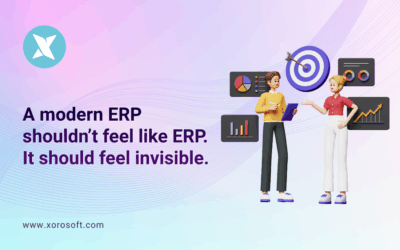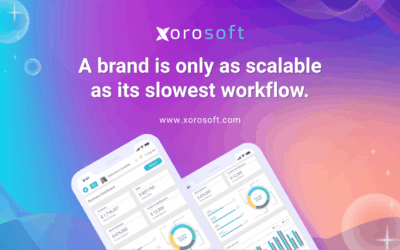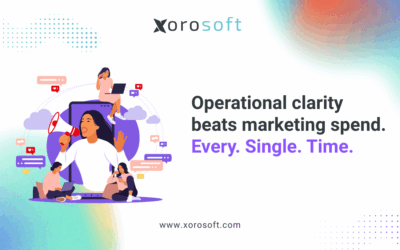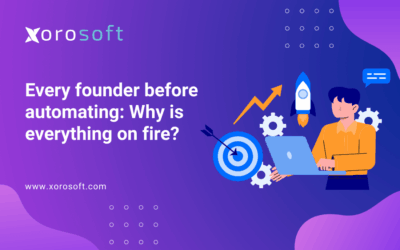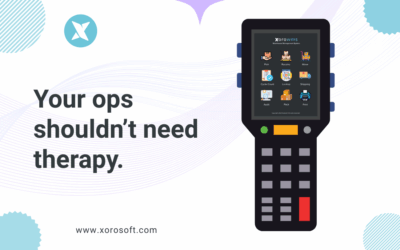
Introduction to ERP systems and their importance in business operations
In today’s fast-paced and highly competitive business landscape, organizations need efficient and streamlined processes to stay ahead of the curve. This is where Enterprise Resource Planning (ERP) systems come into play. An ERP system is a comprehensive suite of integrated software applications that allows businesses to manage various aspects of their operations, such as inventory, accounting, human resources, and customer relationship management, all in one centralized platform.
Implementing an ERP system provides numerous benefits to organizations, including improved operational efficiency, better decision-making, enhanced collaboration, and increased productivity. By consolidating data from different departments into a single system, businesses can gain a holistic view of their operations, enabling them to make informed decisions and react quickly to market changes.
Common challenges faced in ERP systems
While ERP systems offer immense potential, they can also pose challenges that hinder their effectiveness. Some common challenges faced by organizations include complex and time-consuming implementation processes, difficulties in integrating with existing systems, inefficient inventory management, and lack of real-time visibility into financial data.
Implementing an ERP solution often involves significant investments in terms of time, money, and resources. The complexity of the implementation process can lead to delays and disruptions in business operations, causing frustration among employees. Moreover, integrating an ERP system with existing legacy systems can be a daunting task, often requiring customizations and data migrations that can be time-consuming and error-prone.
Another challenge faced by businesses is inefficient inventory management. Without proper integration and real-time updates, organizations may struggle with inaccurate inventory levels, leading to stockouts, excess inventory, and ultimately, dissatisfied customers. Additionally, the lack of real-time visibility into financial data can hinder accurate financial reporting and decision-making.
Understanding XoroERP and its features
One ERP solution that addresses these common challenges is XoroERP. Developed by Xorosoft, a leading provider of enterprise software solutions, XoroERP offers a comprehensive suite of features designed to streamline business operations and overcome the limitations of traditional ERP systems.
XoroERP provides a user-friendly interface and intuitive navigation, making it easy for employees to adapt to the system. The implementation process is simplified, with XoroERP offering pre-built integrations and migration tools to seamlessly connect with existing systems. This ensures a smooth transition and minimizes disruptions to business operations.
One of the key features of XoroERP is its e-commerce integration capability. By integrating e-commerce platforms with the ERP system, businesses can automate various processes, such as order management, inventory synchronization, and customer data synchronization. This integration eliminates manual data entry, reduces errors, and enables real-time updates across all platforms, ensuring accurate and up-to-date information.
Benefits of integrating e-commerce with your ERP system
Integrating e-commerce with your ERP system offers a range of benefits that can significantly improve your business operations. Firstly, it streamlines inventory management by providing real-time visibility into inventory levels across all channels. With XoroERP’s e-commerce integration, businesses can automatically update inventory quantities, track stock movements, and generate accurate forecasts, ensuring optimal inventory levels and minimizing stockouts or excess inventory.
Secondly, integrating e-commerce with your ERP system enhances accounting processes by automating financial transactions and reconciliations. XoroERP’s integration enables seamless synchronization of sales data, customer information, and financial records, eliminating the need for manual data entry and reducing the risk of errors. This ensures accurate and up-to-date financial reporting, enabling businesses to make informed decisions based on real-time financial data.
How XoroERP’s e-commerce integration can overcome challenges in your ERP system
XoroERP’s e-commerce integration is specifically designed to address the challenges faced by businesses in their ERP systems. By seamlessly connecting e-commerce platforms with the ERP system, XoroERP resolves issues related to complex implementation processes and integration with existing systems.
With XoroERP’s pre-built integrations and migration tools, businesses can quickly and easily connect their e-commerce platforms, such as Shopify, Magento, or WooCommerce, to the ERP system. This eliminates the need for customizations and reduces the time and effort required for integration. Moreover, XoroERP’s intuitive interface and user-friendly navigation ensure a smooth transition for employees, minimizing disruptions to business operations.
Streamlining inventory management with XoroERP’s integration
One of the key challenges faced by businesses in their ERP systems is inefficient inventory management. XoroERP’s e-commerce integration addresses this challenge by providing real-time visibility into inventory levels across all channels. Businesses can automatically update inventory quantities, track stock movements, and generate accurate forecasts, ensuring optimal inventory levels and minimizing stockouts or excess inventory.
By integrating e-commerce platforms with XoroERP, businesses can centralize their inventory management, eliminating the need for manual data entry and reducing the risk of errors. Real-time updates ensure accurate inventory information, allowing businesses to make informed decisions regarding purchasing, production, and order fulfillment. This streamlines the entire supply chain, improves customer satisfaction, and reduces costs associated with inventory management.
Enhancing accounting processes with XoroERP’s integration
Another challenge faced by organizations is the lack of real-time visibility into financial data. XoroERP’s e-commerce integration addresses this challenge by automating financial transactions and reconciliations. By synchronizing sales data, customer information, and financial records, businesses can eliminate the need for manual data entry and ensure accurate and up-to-date financial reporting.
With XoroERP’s integration, financial information is automatically updated across all platforms, providing real-time insights into revenue, expenses, and profitability. This enables businesses to make informed decisions based on accurate financial data, improving financial planning and forecasting. Additionally, XoroERP’s integration enables seamless reconciliation of financial transactions, reducing errors and simplifying the accounting process.
Exploring other features and functionalities of XoroERP
In addition to its e-commerce integration capability, XoroERP offers a range of other features and functionalities that further enhance its effectiveness as an ERP solution. Some notable features include:
-
Customer Relationship Management (CRM): XoroERP’s CRM module allows businesses to manage their customer relationships effectively. It provides a centralized database for customer information, enabling businesses to track customer interactions, analyze customer behavior, and personalize marketing campaigns.
-
Supply Chain Management: XoroERP’s supply chain management capabilities help businesses optimize their supply chain processes, including procurement, production planning, and logistics. By streamlining the supply chain, businesses can reduce costs, improve efficiency, and enhance customer satisfaction.
-
Human Resources Management (HRM): XoroERP’s HRM module enables businesses to manage their human resources effectively. It includes features such as employee onboarding, attendance tracking, performance management, and payroll processing, streamlining HR processes and improving employee productivity.
How to implement XoroERP’s e-commerce integration in your business
Implementing XoroERP’s e-commerce integration in your business requires careful planning and execution. Here are some steps to follow:
-
Assess your business requirements: Identify your specific needs and objectives for integrating e-commerce with your ERP system. Determine which e-commerce platform(s) you are currently using or planning to use.
-
Evaluate XoroERP’s compatibility: Check whether XoroERP offers pre-built integrations for your e-commerce platform(s). Assess the compatibility of XoroERP with your existing systems and infrastructure.
-
Customize and configure: Customize XoroERP to align with your business processes and configure the e-commerce integration settings. This may involve mapping data fields, setting up synchronization schedules, and defining workflows.
-
Test and validate: Conduct thorough testing to ensure the integration is working as expected. Validate the accuracy of data synchronization, inventory updates, and financial transactions.
-
Train your employees: Provide comprehensive training to your employees on how to effectively use XoroERP’s e-commerce integration. Ensure they understand the benefits and functionalities of the integration and how it can improve their daily tasks.
Xorosoft ERP vs. other ERP solutions: A comparison
When considering an ERP solution for your business, it is essential to compare Xorosoft ERP with other available options. Here are some factors to consider:
-
Ease of implementation: Xorosoft ERP offers a simplified implementation process with pre-built integrations and migration tools, minimizing disruptions to business operations. Compare this with other ERP solutions to determine which offers a smoother transition.
-
Functionality and features: Assess the features and functionalities offered by Xorosoft ERP and compare them with other ERP solutions. Consider your specific business requirements and determine which solution provides the most comprehensive features to meet your needs.
-
User interface and navigation: Evaluate the user interface and navigation of Xorosoft ERP and compare it with other ERP solutions. An intuitive and user-friendly interface can significantly improve user adoption and productivity.
-
Customer support and maintenance: Consider the level of customer support and maintenance provided by Xorosoft ERP and other ERP solutions. Assess factors such as response time, availability of technical support, and frequency of software updates.
Conclusion: Unlocking the full potential of your ERP system with XoroERP’s e-commerce integration
In conclusion, an ERP system is a powerful tool that can streamline and optimize your business operations. However, common challenges such as complex implementation processes, integration difficulties, inefficient inventory management, and lack of real-time visibility into financial data can hinder its effectiveness.
XoroERP’s e-commerce integration addresses these challenges by providing a seamless connection between e-commerce platforms and the ERP system. By automating processes, streamlining inventory management, enhancing accounting processes, and providing real-time visibility, XoroERP unlocks the full potential of your ERP system and enables your business to thrive in today’s competitive landscape.
To experience the benefits of XoroERP’s e-commerce integration firsthand, book a demo with Xorosoft today. Discover how XoroERP can transform your business and propel it towards success.
